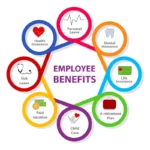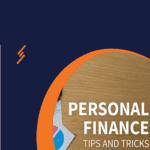Introduction to Private Student Loans
Student loans are often viewed as a blade that cuts both ways: they enable access to advanced education but can also trouble graduates with long-haul debt. While federal student loans offer various repayment plans and absolution choices, private student loans typically lack such adaptability. For many borrowers, private student loans can be particularly challenging to manage because of their higher financing costs and fewer repayment choices. Be that as it may, getting rid of private student loans is certainly not an insurmountable task. In this aid, we’ll investigate several strategies and avenues that borrowers can seek after to alleviate the weight of private student loan debt.
Understanding Private Student Loans:
Private student loans are loans offered by banks, credit associations, and other financial foundations to cover educational costs. Not at all like federal student loans, which are backed by the public authority and offer borrower securities and adaptable repayment choices, private student loans are represented by the terms set by the lender. This lack of federal oversight often translates into higher loan fees, variable repayment terms, and less choices for financial hardship.
Assess Your Loan Expressions:
The most vital phase in getting rid of private student loans is to understand the conditions of your loan agreement completely. Survey the loan records to understand the financing cost, repayment plan, and any penalties for late payments or default. Knowing the points of interest of your loan will assist you with formulating a plan to really tackle it.
Investigate Refinancing Choices:
One choice to consider is refinancing your private student loans. Refinancing includes taking out another loan with a private lender to pay off your current student loans. The goal is to get a lower financing cost or better repayment terms. Nonetheless, refinancing may not be suitable for everybody, as it often requires a decent FICO rating and stable pay. Additionally, refinancing federal student loans into a private loan may bring about the deficiency of federal borrower securities and repayment choices.
Negotiate with Your Lender:
On the off chance that refinancing isn’t a choice, consider reaching out to your lender to investigate different alternatives. A few lenders may negotiate a lower loan cost, broaden the repayment term, or offer a temporary forbearance or delay. Be prepared to communicate your perspective convincingly, featuring any financial hardships or extenuating circumstances that make it challenging for you to meet your loan obligations.
Seek Financial Assistance:
In cases of outrageous financial hardship, it very well might merit investigating choices for financial assistance. A few organizations offer grants or scholarships specifically intended to help borrowers battling with student loan debt. Additionally, certain businesses may offer student loan repayment assistance as part of their representative advantages package. Investigate all available avenues for financial aid to alleviate the weight of private student loan debt.
Consider Debt Settlement:
In situations where repayment is just not feasible, debt settlement may be a choice worth investigating. Debt settlement includes negotiating with your lender to agree on a diminished payoff amount, typically in a singular amount payment. While debt settlement can give help from overpowering debt, it may have long-haul ramifications for your FICO assessment and financial stability. Make certain to gauge the advantages and disadvantages carefully prior to seeking this choice.
Bankruptcy as a Last Resort:
For borrowers facing outrageous financial hardship with no feasible choices for repayment, bankruptcy may be a last resort. While declaring bankruptcy can discharge certain kinds of debt, including private student loans, it is a complicated and arduous process with significant long-haul results. Private student loans are generally not dischargeable in bankruptcy except if the borrower can demonstrate unjustifiable hardship, which is a high legal standard to meet. Talk with a bankruptcy attorney to completely investigate this choice.
Conclusion on Private Student Loans and Solutions
Private student loans can be a significant financial weight for many borrowers, however, there are ways to alleviate the strain. By understanding your loan terms, investigating refinancing choices, negotiating with your lender, seeking financial assistance, considering debt settlement, and, if necessary, investigating bankruptcy as a last resort, you can take moves toward get rid of private student loans and regain control of your financial future. Keep in mind, each situation is extraordinary, so make certain to carefully evaluate your choices and pick the path that best suits your circumstances.




